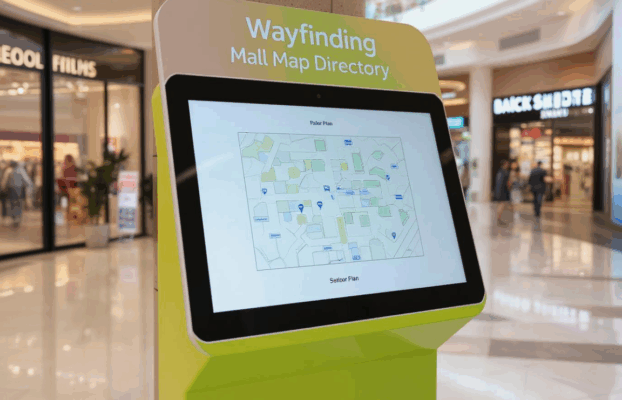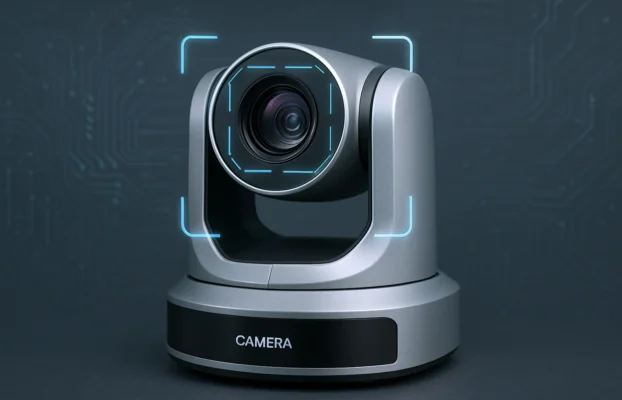
When choosing a flat screen TV display for your digital signage project, there are two types of screens to choose from – consumer and commercial or professional display. While both types may produce a result you are looking for with almost similar outstanding quality picture but they are engineered differently. Regardless or screen type, such as LCD, plasma or LED display, you may need to consider that the professional display is 50% hig.her or doubled the price for a similar screen size.
The professional displays are engineered to work well with a PC with additional features and their architecture supports long hours of operation. On the other hand, the consumer type screens are engineered for home usage and video display are intended for shorter viewing times. Home displays or TV such as those you’d purchase at your local electronics store, work perfectly at home or living room for watching movies and playing video games, but many digital signage require a display engineered to handle increased usage, expansion needs and varied locations.
By adhering to the highest quality control standards for components and manufacturing, professional displays offer significantly better Return on Investment (ROI) than consumer-grade displays. Here’s why you should consider a professional display instead of a consumer display:
Hours of operation
Designed to withstand long operating hours with thermal characteristics built in the internal design for proper heat dissipation in both portrait and landscape modes. Commercial displays typically incorporates additional fans to dissipate heat. Consumer televsisions are built to operate for about four to six hours a day. Professional displays, however, are designed to run 24/7, so they’ll last longer and are less likely to fail at inopportune moments.
Tamper resistant control locks
Because flat panel displays are often used in public spaces, such as for digital signage, it’s important to secure them to prevent disruptions to communications and tampering with controls such as power, volume and other controls. Professional displays are designed to prevent such unauthorized adjustments in standalone or non-monitored public locations.
Vertical or horizontal mounting capability
Consumer-grade televisions aren’t designed to be mounted both vertically and horizontally. When mounted vertically, the television can experience “Gravity Mura,” which can cause dark spots to appear on the screen and reduce lamp life. This discoloration in consumer LCD televisions is caused by pressure in the lower part of the screen, which distorts the alignment of the polarizing film. With a professional LCD display, an improved liquid crystal injection method keeps the pressure at the bottom of the screen at a level that is no higher than that on ordinary TVs or those in a horizontal position.
In addition, consumer televisions do not provide airflow for cooling in the vertical position, which can cause the display to overheat and fail earlier than normal. Finally, consumer televisions are usually not designed to be symmetric so they may appear lopsided when mounted in a vertical position.
Warranty
Consumer displays usually come with a one-year warranty, which can often be reduced to 90 days or deemed void if the display is used in a commercial application. Professional displays, however, typically come with a standard two-year warranty with an option for an additional three-year extended warranty available.
“Yogore” stains
The liquid crystal and PI film for LCD televisions include a variety of impurities. These impurities interrupt the reversion of liquid crystal to its original position. This can cause “Yogore” defects, which can cause boundary lines to appear on the screen, diminishing picture quality. There are drastically fewer impurities in the materials used to manufacture professional LCD displays than TV panels, which severely limits the chances of a “Yogore” stain. This is also called as anti burn-in & image-retention features.
Durability
Consumer televisions aren’t built for operating in demanding environments. With professional displays, there are a variety of options to fit any environment. For instance, professional displays often have a fanless design, which is ideal for environments with high air pollutants, such as Quick-Serve Restaurants (QSRs), which can lead to failure in a display by exposing internal components to elements such as moisture and smoke. In addition, there are professional LCD displays that are IP66-compliant for dustproof and water resistant protection. These are ideal for outdoor use at bus terminals, factories and ski resorts, for example, and are built to function in both cold and hot weather. However, for small project of non-critical application such as pelamin kahwin, regular TV is much cheaper and affordable.
Expandability and integration options
Unlike consumer televisions, many professional LCD displays offer Slot2.0 architecture. Slot2.0 accommodates optional boards, expanding the display’s application possibilities. The technology allows you to easily mount applications and allows for a variety of input terminal cards, including the i5/i7 plug-in PC capable of running even the most powerful software applications. Professional displays also often offer a flexible design for removing and re-installing media PCs without removing the display, simplifying field support, while cutting down on operational expense. Most models recognize all PC resolutions including wide formats and different refresh rates (1024X768@ 60, 72, 75, and 85HX) in addition to TV/video resolutions.
Viewing angle
Professional displays are built with an In-Plane Switching (IPS) panel, which prevents color change when images are viewed from a wide angle. Some consumer televisions are built with a Vertical Alignment (VA) panel. While both panels have viewing angles of about 178 degrees, the image on the VA panel will be of poorer quality, displaying incorrect colors when viewed from off-center angles.
Device control
Professional displays offer increased device control via RS232 or a LAN control. Let’s say a store has a dozen screens. These control options allow all the devices to be controlled from a central location, eliminating the need for a person to run around with a remote control to turn screens on and off or adjust other settings. For larger networks, RS232/LAN Control can be used to monitor hundreds, even thousands, of displays from a central location. Consumer devices lack this capability.
Built-in rear speakers
These eliminate side protrusions for a clean, modern design with seamless appearance for multi-display video walls. This will be especially important if the content you’re displaying has an audio component.
Touch screen capabilities
Your average consumer TV is not capable of offering touchscreen functionality. There are professional LCD displays that offer a built-in touch screen, creating a perfect tool for wayfinding in hospitals or amusement parks, for example. In addition, a touchscreen display could be used as an interactive information kiosk or at a QSR drive-thru.






